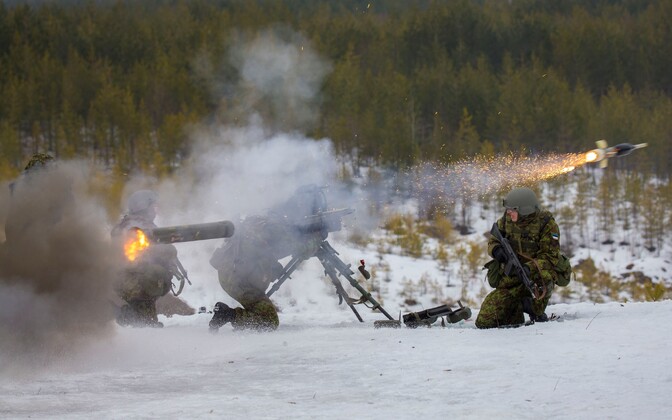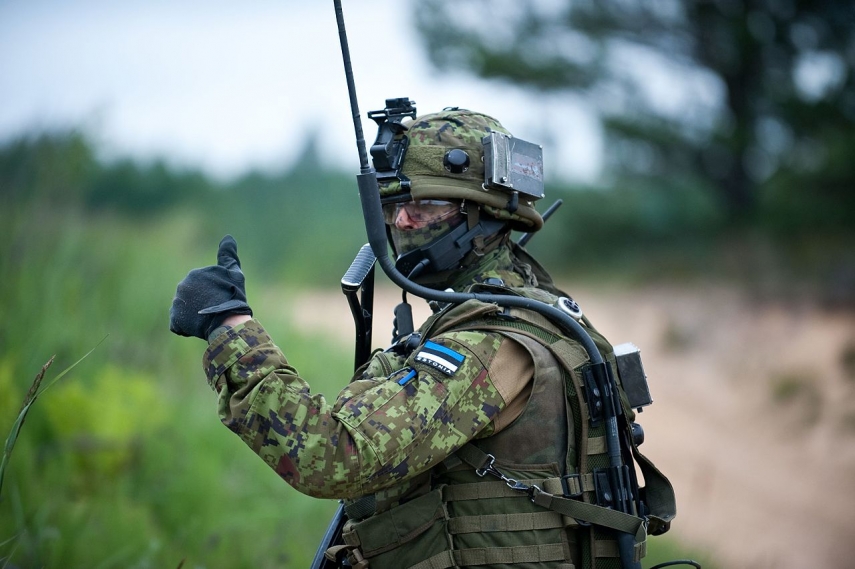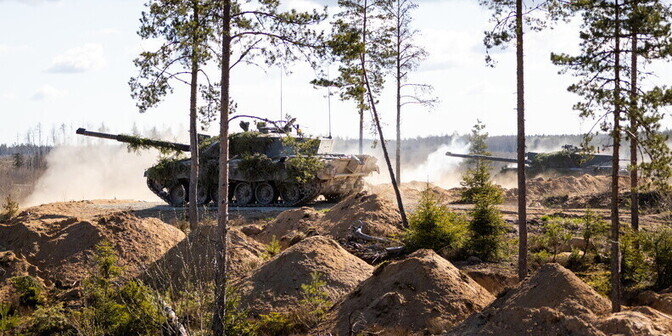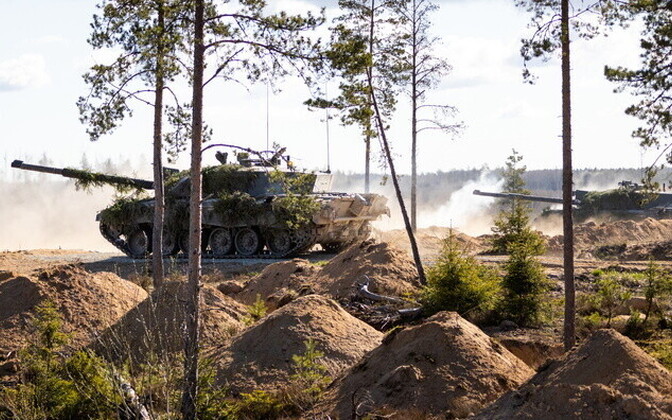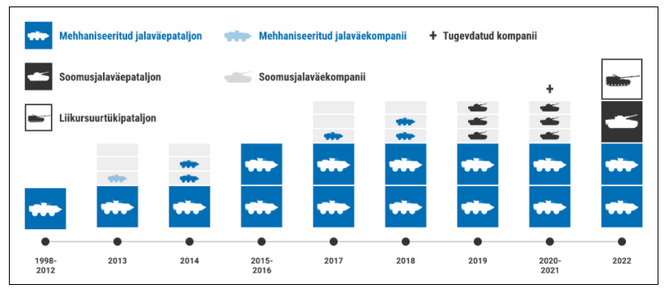Huhta
Greatest Leader
Nyt näkyy olevan käännetty ainakin osittain.
http://www.kaitseministeerium.ee/riigikaitse2026/arengukava/eng/
Suomeksi tärkeimmät asiat tiivistäen:
Joukkorakenteen osalta keskitetään paukut kahden oikeasti varustetun ja miehitetyn prikaatin kehittämiseen entisen viiden vain osittain varustetun ja miehitetyn prikaatin sijaan. 2. Jalkaväkiprikaati saa yhden uuden kevyen jalkaväkipataljoonan ja yhden uuden patteriston. Kaitseliiton alaisuuteen aluepuolustusjoukkoihin luodaan 10 uutta komppaniaa. Valmiusjoukkojen määrä nostetaan 21 000 miehestä yli 24 400 mieheen. Lisäksi esikuntia yhdistetään ja karsitaan.
Varusmiespalveluksen osalta vuosittain koulutettavien varusmiesten määrä nostetaan 3200 --> 4000 ja naisten mahdollisuuksia osallistua parannetaan. Lisäksi tiedotetaan nuoria kansalliseen puolustukseen osallistumisen mahdollisuuksista.
Rahankäytön osalta mainittakoon, että henkilöstömenoille on asetettu yläraja kolmannekseen puolustusbudjetista. Aika edistyksellistä!
Kalustohankintojen osalta, nyt pääsemme tähän aiheista mielenkiintoisimpaan, mainitaan (osin vanhan kertauksena) seuraavat:
1. Scouts-pataljoonan IFV-hankinta suoritetaan loppuun. (Viitannee käyttöönottoon ja Norjasta ostettujen käytettyjen alustojen muokkaamiseen tukiajoneuvoiksi?)
2. 1. Jalkaväkiprikaati saa itseliikkuvaa tykistöä. (K9?)
3. 2. Jalkaväkiprikaati saa uuden patteriston 122 mm haupitseilla. (Suomesta ostetun D-30 kaluston uudelleenorganisointi?)
4. Prikaatien lähi-ilmatorjunta kehitetään maksimiin. (Mitä lie tarkoittanee? Mistralien lisähankintaa vai Sergeiden päivittämistä, jopa uuden järjestelmän hankintaa?)
5. Prikaatien tiedusteluosat varustetaan moderneilla UAV:eilla.
6. Liikkuvaan sodankäyntiin soveltuvien yksiköiden ("manoeuvre units") panssarintorjuntaa parannetaan entisestään ja kevyet asejärjestelmät korvataan uusilla läpi joukkorakenteen. (Wikipediassa Virolle on listattu melkoinen määrä erityyppisiä pst-aseita: kertasingoista C90-CR, singoista B-300 ja Carl Gustav sekä ohjuksista Milan 2, Javelin ja MAPATS. Mitä lie tulossa? Uusi kertasinko? NLAW? Jotakin muuta?)
7. Laivaston miinantorjunta-alusten modernisaatio suoritetaan loppuun.
http://www.kaitseministeerium.ee/riigikaitse2026/arengukava/eng/
National defence development plan
2017–2026
The national defence development plan – what is that?
- REALISTIC DEVELOPMENT
The military defence domain of the national defence development plan describes the realistic development objectives for Estonia’s military defence until the year 2026.- TEN-YEAR OBJECTIVES
The achievement of military defence objectives set for ten year horizons will be achieved through the four-year development action plans, which sets forth the activities and resources. These also serve as input for the draft annual defence budget.- ORIGINS OF THE DEVELOPMENT PLAN
The roots of the current development plan – the third one – go back to 2008. Immediately after the military defence development plan for 2008-2017 was drafted, the recession started, along with the Russia-Georgia War in 2008. These two events forced the Government to make significant adjustments to the plans laid in 2008 in the course of preparing the national defence development plan for 2013-2022 (Estonian abbreviation: RKAK 2022).
IMPLEMENTATION OF THE NATIONAL DEFENCE DEVELOPMENT PLAN 2013-2022
The approval of RKAK 2022 – the second ten-year development plan – took a clear direction toward developing combat-ready units that are manned, armed, equipped, trained, and maintained in the light of the resources realistically available during the planning period.
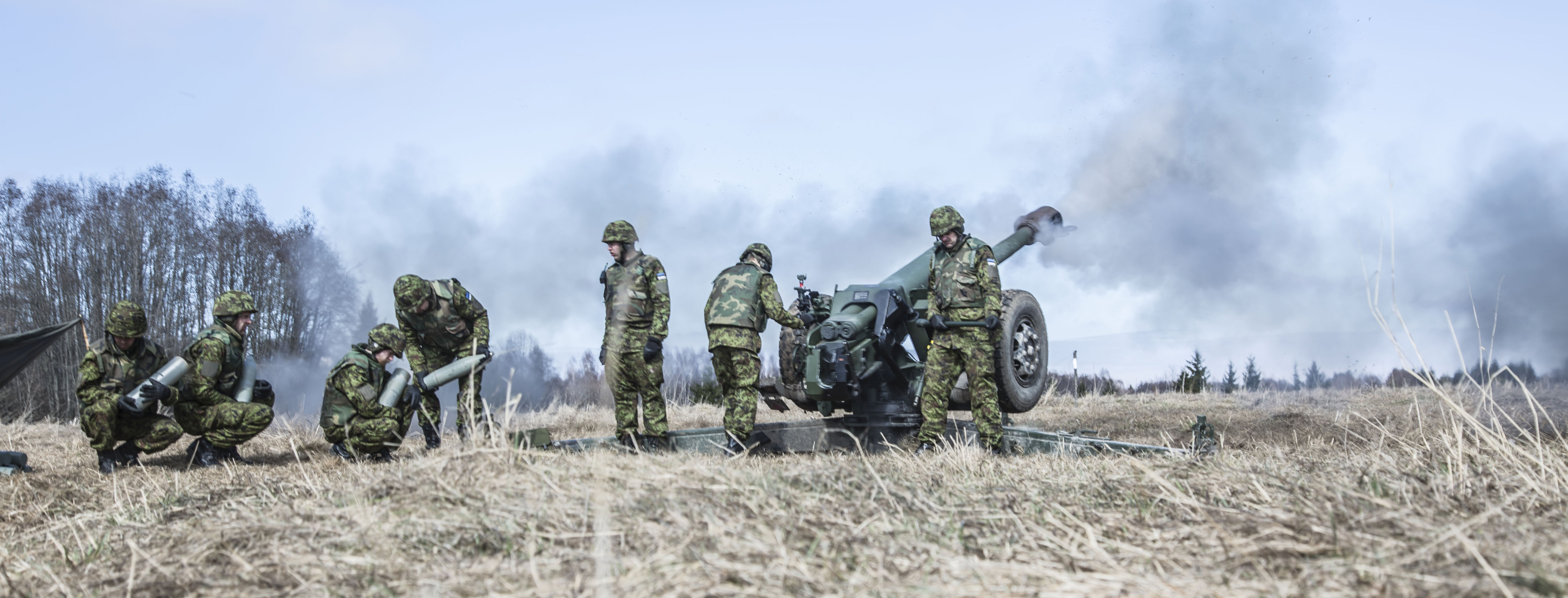
Amendments to the Defence Forces Organisation Act and the Military Service Act implemented all of the structural changes envisioned in RKAK 2022: cuts were made to the number of staffs, and new structures were introduced - Military Intelligence Centre, Support Command, Special Operations Command and the command system for the two brigades.
The structural reforms of RKAK 2022 were essentially completed by January 1 2016 when The National Defence Act was carried into effect.
MORE DETAILS…
Meanwhile
- Resources were consolidated for development of two combat-capable infantry brigades to replace a former planned structure the size of five infantry brigades that were not fully manned or equipped.
- The Defence League is responsible of developing territorial defence units, also the Territorial Defence Districts (maakaitseringkond) have been established in order to organize defence in specific regions.
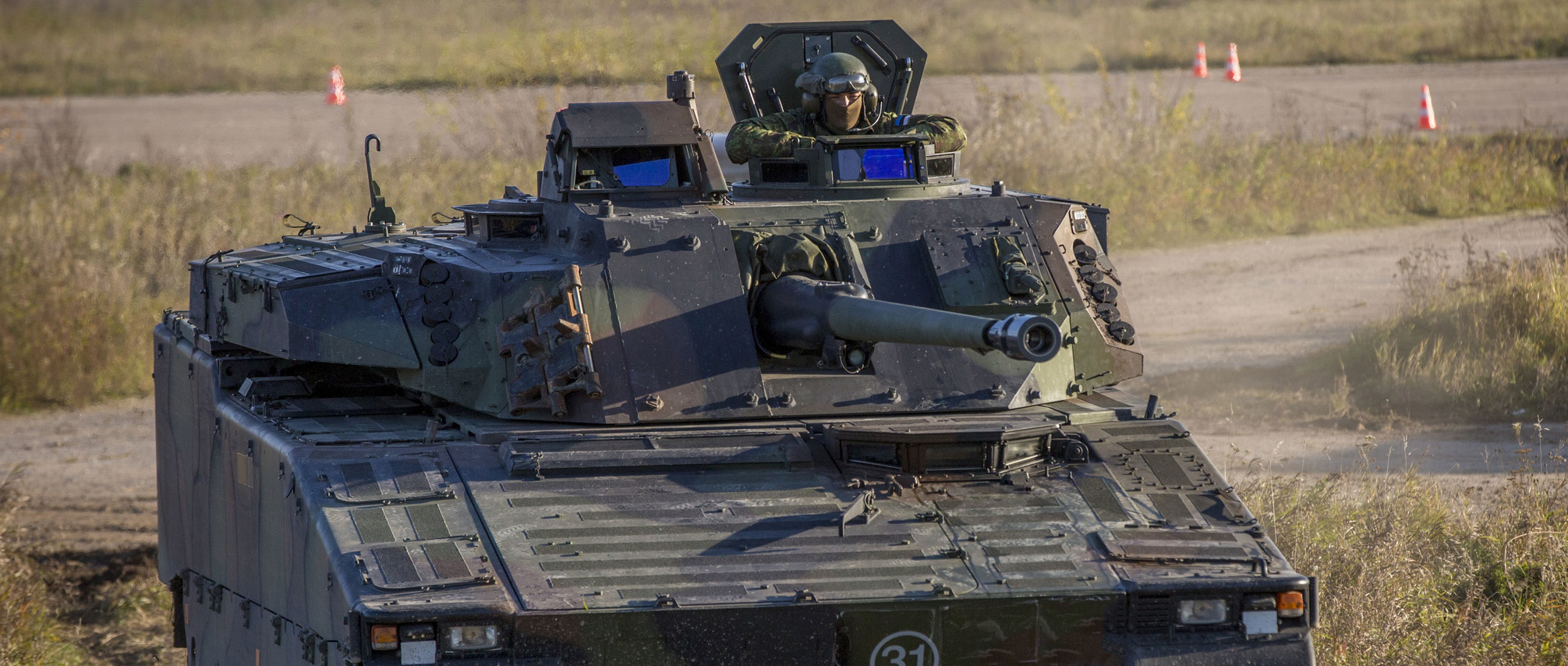
- The 1st Infantry Brigade has become a combat-ready unit – as attested to by the experience of Exercise SIIL 2015 and other readiness exercises.
- Within the 1st Infantry Brigade, the Scouts Battalion is being armed with Infantry Fighting Vehicles CV9035, the other infantry battalions will operate with Armoured Personnel Carriers.
- Anti-tank units will be armed with modern anti-tank missile systems.
- The development of the 2nd Infantry Brigade has started earlier than planned due to the general threat assessment.
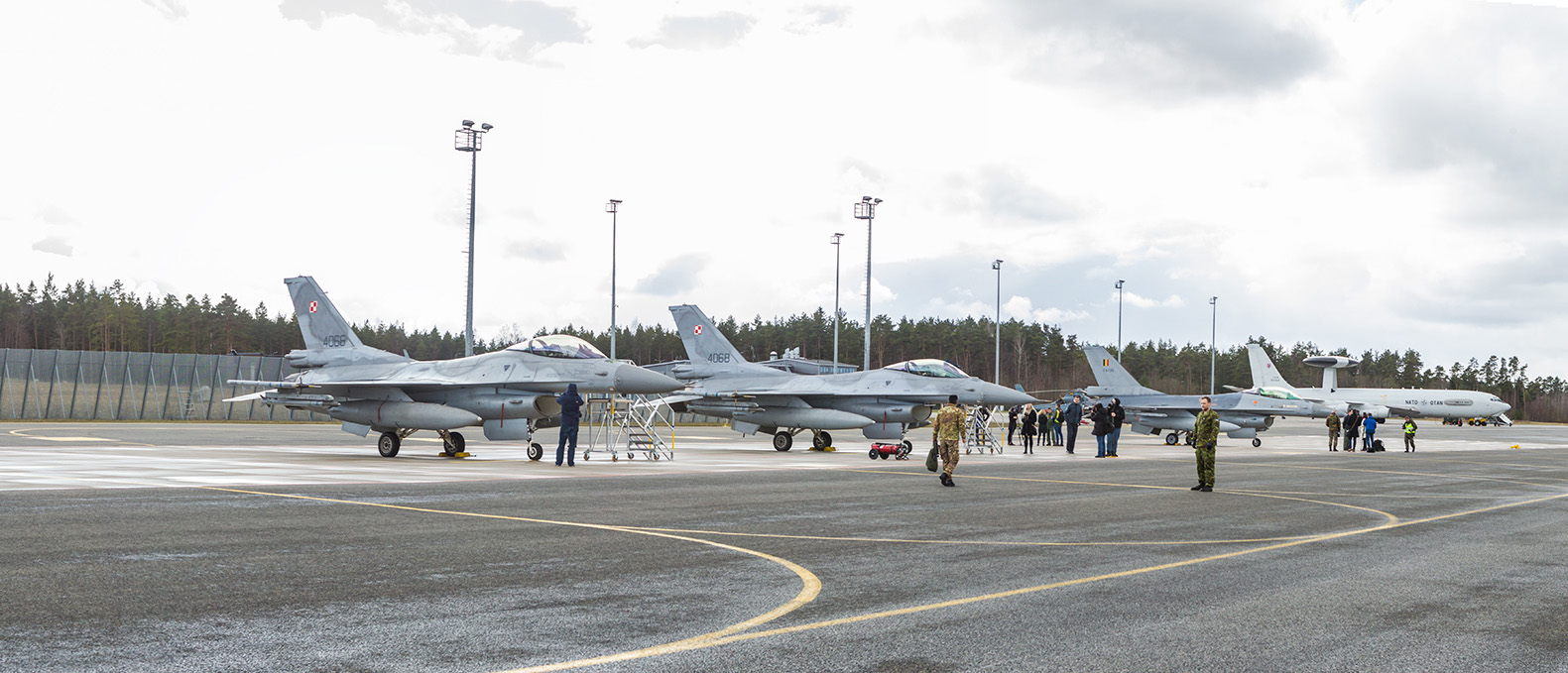
- The Navy continues to develop mine counter-measure capabilities.
- The Air Force has developed Ämari Air Base to be capable to host the NATO Baltic Air Policing mission, and other day-to-day operations. NATO has also contributed to development of the base.
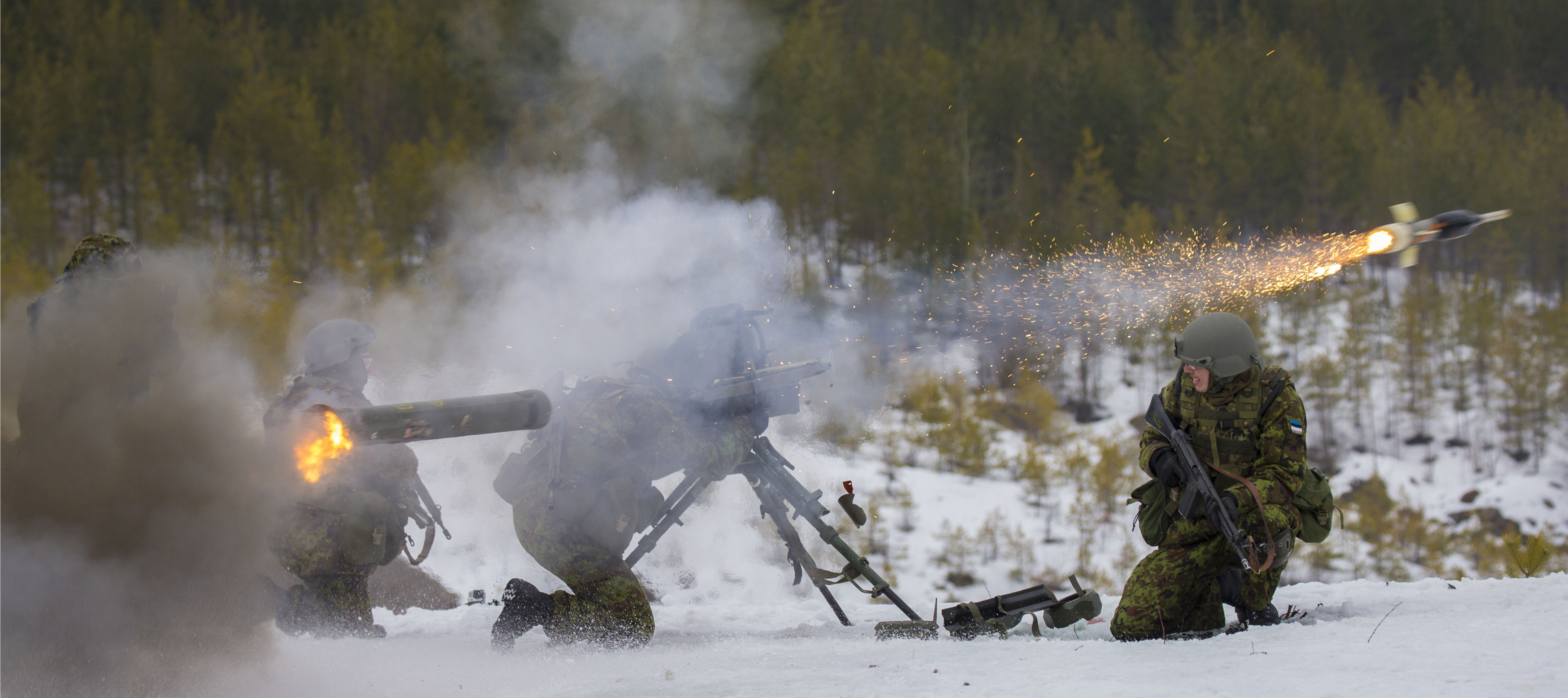
The experience gained from implementation of RKAK 2022 supports the conclusion that the military defence plans laid in 2013 have proved realistic in terms of resources.
NATIONAL DEFENCE DEVELOPMENT PLAN 2017-2026
Similarly to the drafting of RKAK 2022, the current national defence development plan for
2017-2026 (RKAK 2026) strictly observes the principle that during the lifecycle, capabilities in development have to be in compliance with the resources made available for Estonian military defence.
OBJECTIVES
OPTIMAL PERSONNEL EXPENSES
To implement military defence development objectives, possibilities for saving on costs of support activities were explored. As a result, a cap has been established on the percentage of costs for personnel in the Ministry of Defence’s jurisdiction – by 2026, the payroll expenses in the area of administration of the ministry may not exceed one-third of the defence budget. This is an exceptionally low figure for NATO member states.
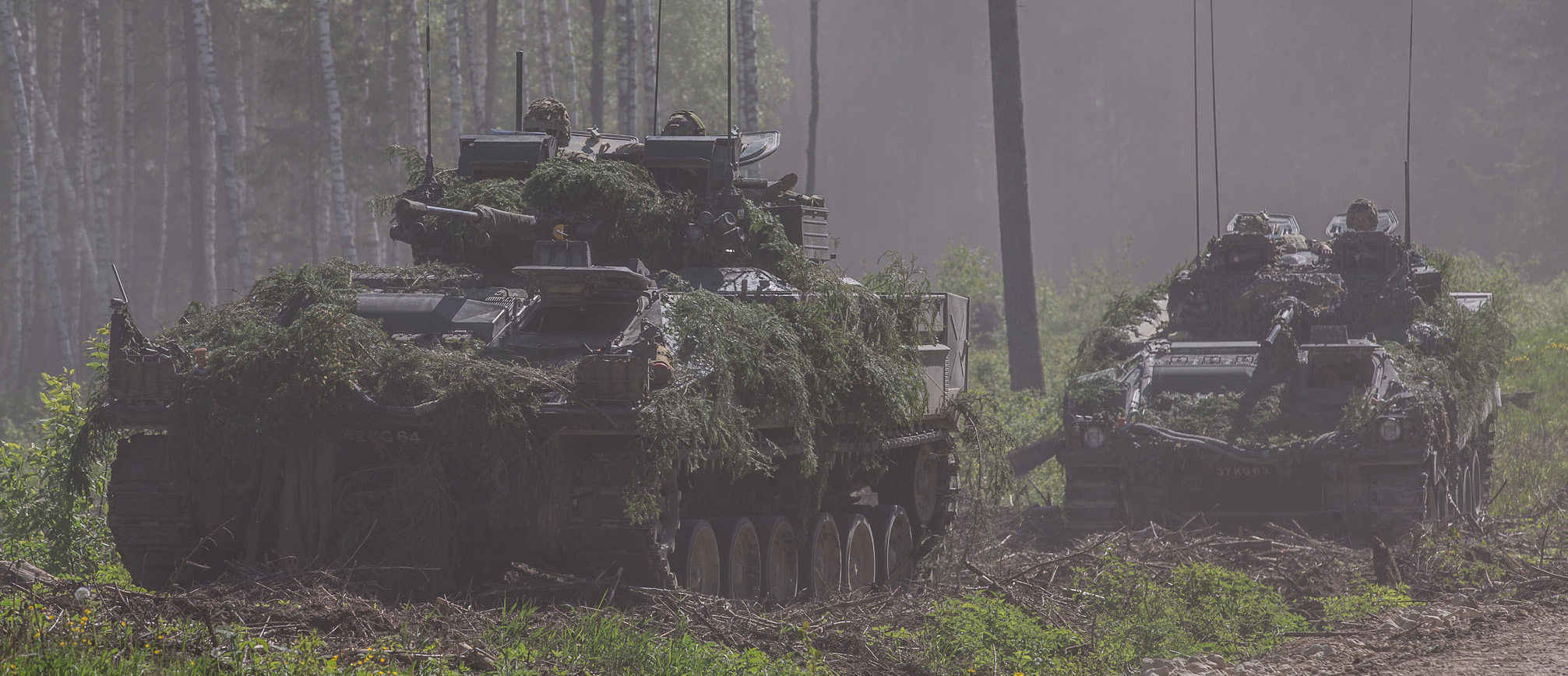
RAISING MILITARY READINESS
Ensuring readiness is central to the development plan in every sense – the top priority are procurements that yield the maximum military effect and ensure sufficient stockpiles of ammunition. By 2026, all units will be equipped in line with the requirements.
DEVELOPMENT OF TERRITORIAL DEFENCE
- The procurement of IFVs for the Scouts Battalion will be completed. The 1st Infantry Brigade will be armed with self-propelled artillery. The 2nd Infantry Brigade will have an additional artillery battalion equipped with 122mm howitzers and an additional light infantry battalion for increasing combat capability. Brigades’ short-range anti-air capability will be developed to the maximum.
- The anti-tank capability of manoeuvre units will be further improved and the light weapon systems will be replaced with new ones throughout the structure.
- Brigades’ reconnaissance units will be equipped with modern UAVs.
The modernization of the Navy’s minehunters will be completed.
The development of territorial defence will continue. In recent years, the number of members of the Defence League has been in dynamic growth and the territorial defence units prepared by the Defence League have become a militarily significant part of the rapid response structure. The development plan envisions the establishment of ten additional light infantry companies for territorial defence.
INCREASING THE RESPONSE CAPABILITY OF THE DEFENCE FORCES
As a result of the changes implemented in the development plan, the Defence Forces response capability will increase and the size of the rapid reaction structure will increase from the current 21,000 to over 24,400.
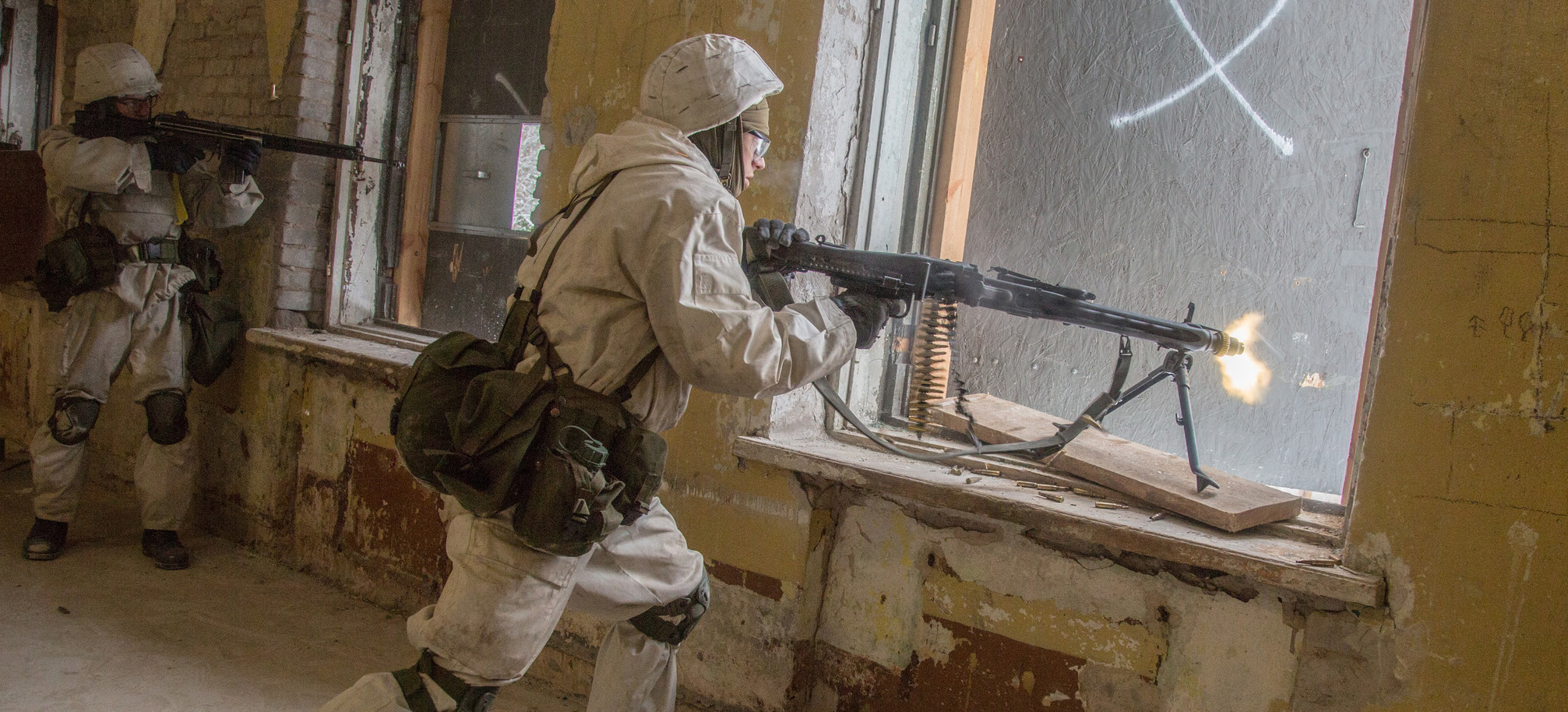
DEVELOPMENT OF A RESERVE ARMY
A national defence model based on a reserve force has proven itself. This is underscored by the results of the exercise SIIL 2015, the longstanding experience of neighbouring Finland, and Lithuania’s decision to reinstate a reserve and conscription based military defence model after briefly discontinuing conscription.
The forecast for the ageing of the population does not mean the model is any less vital, but will require engagement with the population to be diversified across gender lines, by modernizing military training and – to avoid marginalization of conscription –through increasing the percentage of those who have completed compulsory military service.
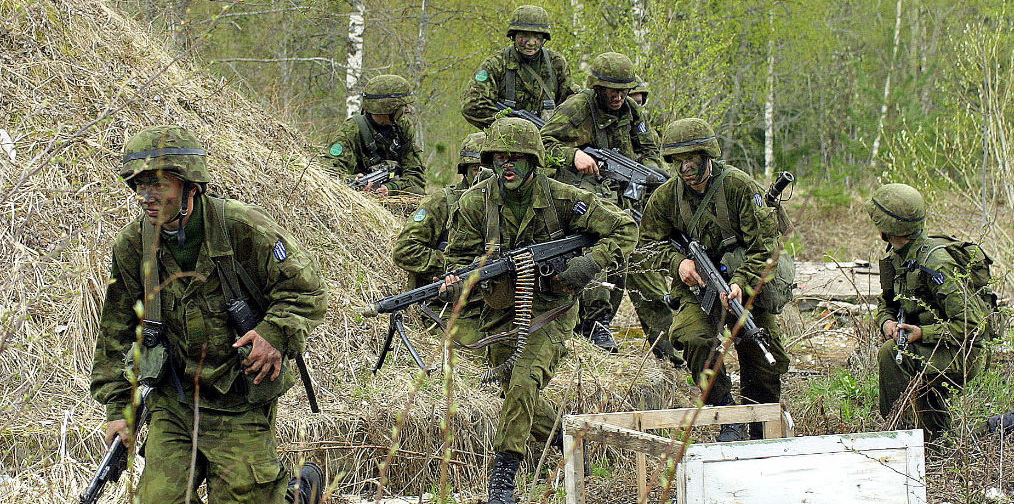
- The number of conscripts will increase from 3,200 to 4,000 by 2026.
- The possibilities for women to take part in conscription service and active duty will be widened.
- Awareness among youth concerning the possibilities to contribute to national defence will be increased.
ESTABLISHMENT OF THE CYBER COMMAND
At the NATO Warsaw summit, a historic decision was made: the cyberspace was declared a separate military domain. The decision was occasioned by the growing importance of electronic warfare and cyber operations in military conflicts. Based on both the technological advances in warfare and in order to maintain Estonia’s leader position in cyber field, a decision of establishing the Cyber Command of the Estonian Defence Forces was made. The Command’s mission is to defend Estonian and Allies’ information systems from influence operations conducted by an adversary and to be prepared to carry out active cyber defence operations. For this purpose, the information technology competence in the Ministry of Defence’s jurisdiction will be consolidated and additional resources will be allocated to the cyber sphere.
PRIORITISING THE COLLECTIVE DEFENCE
The principle of collective defence enshrined in the North Atlantic Treaty is taken into consideration in planning military defence. NATO’s military presence in the Baltic region has grown and Estonia hosts an allied battalion battle group as of summer 2017. Estonia ensures sufficient host nation support for allied units deployed here.

Estonia’s consistent commitment to development of military defence and Allies’ readiness to spend noteworthy resources for strengthening NATO’s deterrence and defence posture in the region give assurance that in the changing world, Estonia’s military security rests strongly on two pillars: a well-designed independent defence capability and trustworthy collective defence.
SPENDING
- The precondition for resource planning is that defence spending should remain at a minimum of two per cent of GDP. The direct infrastructure and maintenance costs related to hosting NATO units are additional to that 2%.
- The amount of defence spending is based on the economic forecast published by the Ministry of Finance. The development plan was prepared based on the economic forecast of spring 2016.
- The majority of the spending in the jurisdiction of the Ministry of Defence is aimed at equipping units, salaries for active duty personnel, and organizing conscription. Other expenses are kept under strict control.
Suomeksi tärkeimmät asiat tiivistäen:
Joukkorakenteen osalta keskitetään paukut kahden oikeasti varustetun ja miehitetyn prikaatin kehittämiseen entisen viiden vain osittain varustetun ja miehitetyn prikaatin sijaan. 2. Jalkaväkiprikaati saa yhden uuden kevyen jalkaväkipataljoonan ja yhden uuden patteriston. Kaitseliiton alaisuuteen aluepuolustusjoukkoihin luodaan 10 uutta komppaniaa. Valmiusjoukkojen määrä nostetaan 21 000 miehestä yli 24 400 mieheen. Lisäksi esikuntia yhdistetään ja karsitaan.
Varusmiespalveluksen osalta vuosittain koulutettavien varusmiesten määrä nostetaan 3200 --> 4000 ja naisten mahdollisuuksia osallistua parannetaan. Lisäksi tiedotetaan nuoria kansalliseen puolustukseen osallistumisen mahdollisuuksista.
Rahankäytön osalta mainittakoon, että henkilöstömenoille on asetettu yläraja kolmannekseen puolustusbudjetista. Aika edistyksellistä!
Kalustohankintojen osalta, nyt pääsemme tähän aiheista mielenkiintoisimpaan, mainitaan (osin vanhan kertauksena) seuraavat:
1. Scouts-pataljoonan IFV-hankinta suoritetaan loppuun. (Viitannee käyttöönottoon ja Norjasta ostettujen käytettyjen alustojen muokkaamiseen tukiajoneuvoiksi?)
2. 1. Jalkaväkiprikaati saa itseliikkuvaa tykistöä. (K9?)
3. 2. Jalkaväkiprikaati saa uuden patteriston 122 mm haupitseilla. (Suomesta ostetun D-30 kaluston uudelleenorganisointi?)
4. Prikaatien lähi-ilmatorjunta kehitetään maksimiin. (Mitä lie tarkoittanee? Mistralien lisähankintaa vai Sergeiden päivittämistä, jopa uuden järjestelmän hankintaa?)
5. Prikaatien tiedusteluosat varustetaan moderneilla UAV:eilla.
6. Liikkuvaan sodankäyntiin soveltuvien yksiköiden ("manoeuvre units") panssarintorjuntaa parannetaan entisestään ja kevyet asejärjestelmät korvataan uusilla läpi joukkorakenteen. (Wikipediassa Virolle on listattu melkoinen määrä erityyppisiä pst-aseita: kertasingoista C90-CR, singoista B-300 ja Carl Gustav sekä ohjuksista Milan 2, Javelin ja MAPATS. Mitä lie tulossa? Uusi kertasinko? NLAW? Jotakin muuta?)
7. Laivaston miinantorjunta-alusten modernisaatio suoritetaan loppuun.

